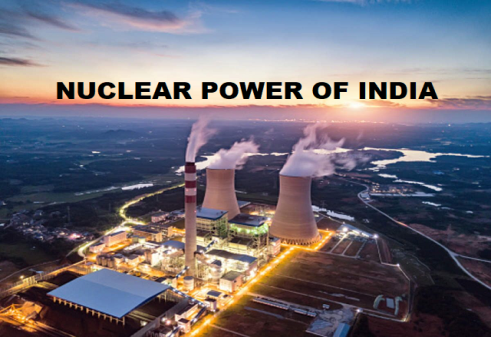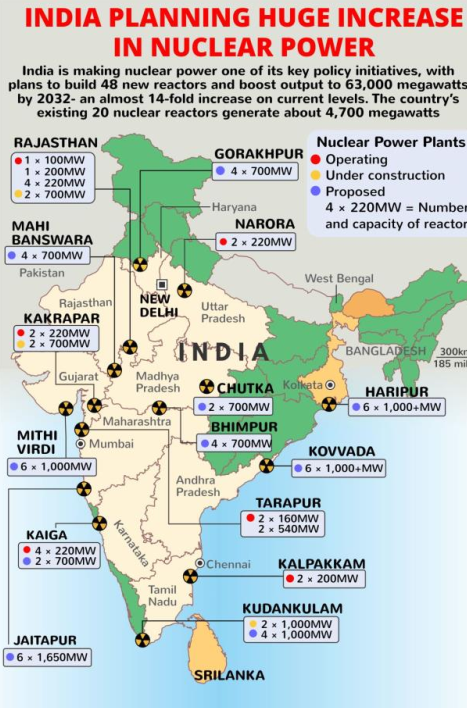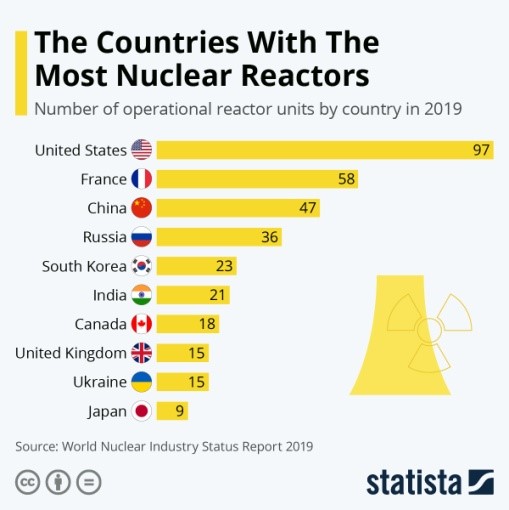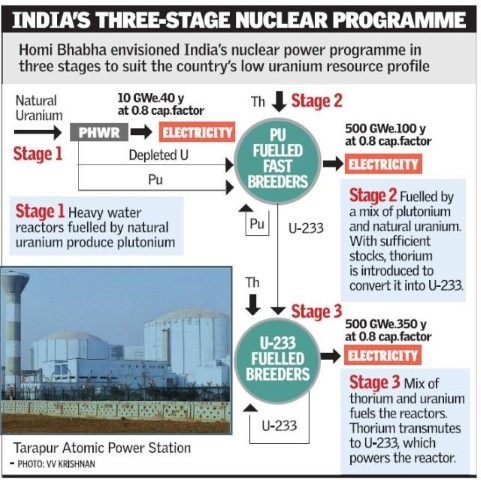Description

Disclaimer: Copyright infringement not intended.
Context
- Union Minister of Atomic Energy said, the Government has accorded ‘In-Principle’ approval of the site at Jaitapur in Maharashtra for setting up six nuclear power reactors of 1650 MW each in technical cooperation with France.
About
- This would make it the largest nuclear power generating site with a total capacity of 9900 MW.
- Jaitapur would be the world’s most powerful nuclear power plant.
- There would be six state-of-the-art reactors with an installed capacity of 9.6 GWe that will produce low carbon electricity.
- It would provide electricity to seven crore households.

Worldwide Nuclear Production:
- Approximately 10% of the world’s electricity is produced using nuclear energy.
- Worldwide, nuclear power plants are operational in around 30 countries.
- In France, approximately 75% of the electricity is produced by Nuclear energy.
- A total of around 450 nuclear reactors are operating worldwide for generating electricity.

Nuclear Power in India
- Genesis: India's nuclear programme can trace its origins to 1944 and its efforts in 3 stage technology were established by Homi Jehangir Bhabha when he founded the nuclear research centre, the Tata Institute of Fundamental Research.
- Today, India has 23 nuclear reactors in operation in 7 nuclear power plants, with a total installed capacity of 7,480 MW.
- Kudankulam Nuclear Power Plant is the largest nuclear power station in India, situated in Tamil Nadu.

India’s Nuclear Share
- The present installed nuclear power capacity in the country is 6780 MW.
- The share of nuclear power in the total electricity generation in the country is about 1% in the year 2020-21.
- The present nuclear power capacity of 6780 MW is planned to be increased to 22480 MW by 2031 on progressive completion of projects.
Importance of Nuclear Energy
- Thorium and Uranium reserves: India has vast reserves of Thorium that can fuel India’s nuclear energy provided appropriate technology. India’s thorium deposits, estimated at 360,000 tonnes, and natural uranium deposits at 70,000 tonnes. The country’s thorium reserves make up 25% of the global reserves.
- Energy poverty: Although India is the 3rd largest producer of electricity, about 20 % of the population of the country does not have access to electricity today. The per capita consumption of electricity is very low at about 1,181 kWh per annum, about half of the world average and way below that of advanced countries. There exist shortages in energy and peak power in the range 10-15%.
- Energy demand: Nuclear energy is a critical part for India’s future energy security. As we know India’s annual energy demand is expected to rise to 800 GW by 2032, it is very important to consider every source of energy in the optimum energy mix.
- Energy efficiency: Quantities of nuclear fuel needed are considerably less than thermal power plants. For instance, 10000 MW generation by coal will need 30-35 million tons of coal, but nuclear fuel needed will be only 300-350 tons.
- Economic growth: Rapid economic growth is also critical to achieve developmental objectives and poverty alleviation. A sustained economic growth of about 8 to 10% is needed over the next few decades. As electricity is a key driver for economic growth, it is necessary that there is a massive augmentation in electricity capacity, apart from transmissions and distribution systems.
- Decrease in Energy Supply: Energy supply has been negatively affected by changing weather patterns. As water reservoirs decreases due to lower precipitation and increased evaporation, capacity for electricity production from hydropower and other water-intensive generation technologies may decline.
- Climate change: Due to its emission-free nature, nuclear energy can contribute to global efforts under the Paris Agreement. India’s Nationally Determined Contribution (NDC) to the United Nations Framework Convention on Climate Change (UNFCCC) has outlined goals to reduce the carbon emissions intensity of its economy by 33-35% by 2030 as well as increase the clean energy electricity capacity to 40% of the total installed capacity in the same period.
Challenges
- Public Awareness: Commercial nuclear power is sometimes viewed by the general public as a dangerous or unstable process. This perception is often based on three global nuclear accidents, its false association with nuclear weapons,
- Used Fuel Transportation, Storage and Disposal: Many people view used fuel as a growing problem and are apprehensive about its transportation, storage, and disposal.
- Constructing New Power Plants: Building a nuclear power plant can be discouraging for stakeholders. Conventional reactor designs are considered multi-billion dollar infrastructure projects. High capital costs, licensing and regulation approvals, coupled with long lead times and construction delays, have also deterred public interest.
- High Operating Costs: Challenging market conditions have left the nuclear industry struggling to compete. Strict regulations on maintenance, staffing levels, operator training, and plant inspections have become a financial burden for the industry.
Is nuclear power a zero-emissions energy source?
- Nuclear energy is also responsible for greenhouse gas emissions.
- Uranium extraction, transport and processing produces emissions.
- The long and complex construction process of nuclear power plants also releases CO2, as does the demolition of decommissioned sites. Nuclear waste transport and storage.
- At COP26, environmental initiative Scientists for Future (S4F) presented a paper on nuclear energy and the climate. Which stated that “Taking into account the current overall energy system, nuclear energy is by no means CO2 neutral,”
- World Information Service on Energy (WISE) calculated that nuclear plants produce 117 grams of CO2 emissions per kilowatt-hour.
- Combination of excessive costs, environmental consequences and lack of public support are all arguments against nuclear power.
Final Words
- If the entire life cycle of a nuclear plant is included in the calculation, nuclear energy certainly comes out ahead of fossil fuels like coal or natural gas.
- Atomic Energy Commission, said that India’s energy future depended on its rapid growth of nuclear power.
- Nuclear waste is a major concern globally and dissuades many countries from relying on this technology.
- Reprocessing of this waste helps reduce the quantum of waste generated in the reactor that needs to be disposed of through safe storage.
- The solution to various challenges is not to shun the technology altogether, but to use technology to counter the problems caused by technology.
- For example: India has invested large resources in its recycle programme through the Integrated Nuclear Recycle Plant (INRP).
- To our advantage, when it comes to nuclear power, India has established a good safety culture.
- Thus India has a lot going in its favour when it comes to replying on nuclear power generation.
Read: https://www.iasgyan.in/daily-current-affairs/nuclear-fusion-and-fission
https://www.pib.gov.in/PressReleasePage.aspx?PRID=1782229













